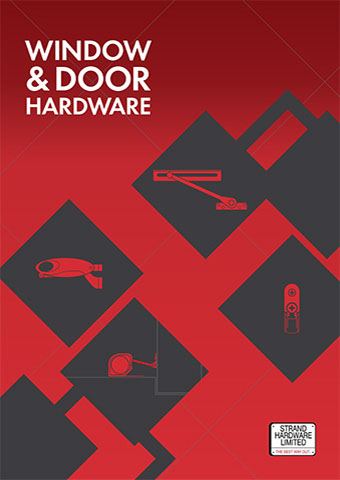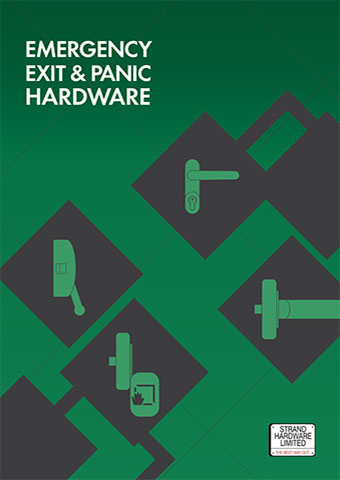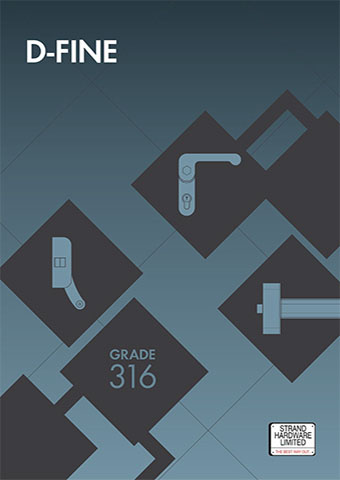Staying Power: Enhancing Door Functionality and Safety in Architecture
Small but mighty: the door limiting stay, also known as a door restrictor or door limiter, is a key component which enables functionality and safety in entrance design. Craig Fox, Sales Director for Strand Hardware, outlines how architects might apply these little problem solvers.
Architects strive to design spaces that are not only aesthetically pleasing but also functional, safe, and durable. Every element in a building contributes to these goals, including often-overlooked hardware like door limiting stays. These small but mighty components – which can also be used for windows - can play a crucial role in maintaining the integrity and usability of doors within various architectural environments.
From warehouses to modern apartments, grand entrances to internal cupboard doors, a stay device can address a variety of needs including those where there is limited space or where underfloor heating prevents floor mounted door stops from being used.
Their installation can bring a host of benefits:
Preventing Damage to Doors and Surroundings
One of the primary reasons to use a door limiting stay is to prevent damage. Doors that swing open too far can collide with walls, furniture, or other doors, leading to unsightly dents, scratches, and structural damage. This is particularly problematic in high-traffic areas such as commercial buildings, schools, and hospitals where doors are frequently used. By installing door limiting stays, architects can ensure that doors open only to a specified angle, thus protecting both the door and its surrounding environment from unnecessary damage. This small investment can save significant costs related to repairs and maintenance in the long run.
Enhancing Safety
Safety is a paramount concern in any architectural project. Doors that swing open too quickly or too far can pose a serious risk of injury, especially in environments with children, elderly individuals, or people with disabilities. For example, in a busy school, an unrestrained door could swing open and injure a passing pupil. In a healthcare setting, a door that opens too widely could block crucial pathways or hit medical equipment. Door limiting stays mitigate these risks by controlling the range and speed of the door's movement, thereby enhancing overall safety.
Protection Against Wind and Elements
In environs prone to strong winds or sudden gusts, such as coastal areas, doors can be blown open or shut forcefully, causing potential damage or injury. Door limiting stays act as a safeguard in such scenarios by restricting the door's movement, prevent it from being thrown open or slammed shut by the wind. This is especially useful for exterior doors, patio doors, and doors in high-rise buildings where wind pressure can be significant.
Facilitating Controlled Ventilation
Ventilation is an essential consideration in architectural design, contributing to the comfort and health of a building's occupants. Door limiting stays allow doors to be opened to a specific, controlled position, facilitating natural ventilation without the risk of the door swinging wide open or shutting unexpectedly. This controlled opening can improve indoor air quality and provide a pleasant environment, especially in residential and hospitality settings where airflow is crucial.
Prolonging Door Longevity
By controlling the range of motion, door limiting stays can significantly reduce the wear and tear on door hinges, frames, and the door itself. This is particularly beneficial in commercial and institutional settings where doors are subject to frequent use. By minimising the stress and strain on door components, these devices help extend the lifespan of doors, ensuring they remain functional and aesthetically pleasing for longer. This not only enhances the building's overall durability but also represents a cost-effective solution by reducing the need for frequent repairs and replacements.
Ideal for Various Settings
The application of door limiting stays can be useful in a variety of settings but specifically in:
- Residential Buildings: In homes, door limiting stays are useful for external outward opening doors, patio doors, and internal doors where there is limited space and opening needs to be restricted to prevent damage.
- Commercial Spaces: Offices, retail stores, and hotels benefit from door limiting stays by ensuring safety, security, and durability of doors. In hotel rooms, they allow for partial opening for security, while in retail stores, they prevent doors from hitting display setups.
- Healthcare Facilities: Hospitals and clinics need door limiting stays to ensure doors do not interfere with medical equipment or pose risks to patients and staff. Controlled door movement is crucial in emergency situations.
- Educational Institutions: Schools and universities see heavy door usage. Limiting stays protect doors from damage due to frequent opening and closing and ensure the safety of students and staff.
- Public Buildings: Libraries, museums and government buildings benefit from the added security and controlled access that door limiting stays provide, ensuring a safe and welcoming environment for visitors.
Strand Hardware offers a variety of door stays – morticed or surface mounted which are suitable for a range of windows, doors and surrounds - timber, aluminium, and Pvc-u. For more information visit: www.strandhardware.co.uk/index.php/products/window-and-door-hardware/friction-door-stays
In conclusion, incorporating door limiting stays into architectural design is a thoughtful and practical approach that addresses multiple concerns, from safety to durability and comfort. The architect’s goal is to create spaces that are not only visually appealing but also functional and safe for all users. By paying attention to these small but significant details, we can enhance the overall quality and longevity of projects, ensuring they meet the highest standards of design and usability. The integration of door limiting stays is a testament to the importance of considering every aspect of a building's design, no matter how minor it may seem.






